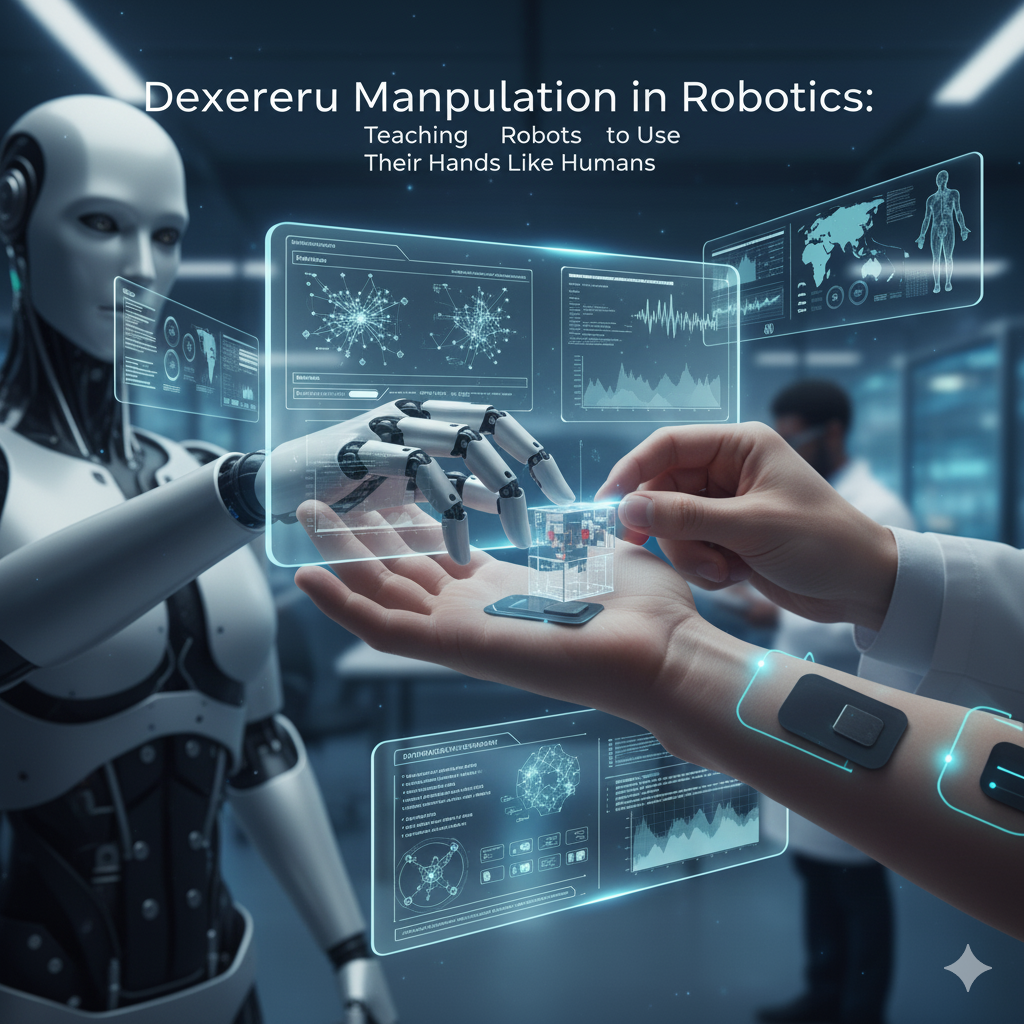What Is Dexterous Manipulation?
Dexterous manipulation involves giving robots the ability to use their hands or fingers similarly to humans. It enables robots to pick up, hold, and move various objects safely, whether it’s a soft fruit or a heavy metal tool.
In simple terms, it focuses on making robots more flexible and careful when handling items, rather than repeating the same motion over and over.
Why It’s Important
Traditional robots can operate quickly, but they struggle with delicate or uneven objects. For instance, a standard robot might drop a tomato or break a glass because it doesn’t sense how tightly it is holding something.
Dexterous manipulation addresses this issue by using smart sensors and AI, allowing robots to adjust their grip and pressure automatically, just like we do with our hands.
How It Works
To create dexterous robots, engineers combine several technologies:
- Tactile Sensors: Help robots feel how firmly they are holding something.
- Computer Vision: Allows robots to see what they are touching and where to move.
- Machine Learning & AI: Teach robots how to respond and improve with experience.
- Robotic Hands / Grippers: Specially designed soft or jointed hands that move like real fingers.
Together, these systems enable robots to handle complex tasks that need precision and control.
Real-Life Uses of Dexterous Robots
Dexterous manipulation isn’t just a concept; it’s already making a difference in many industries:
- Manufacturing: Robots carefully assemble tiny electronic parts.
- Warehouses: Robots safely pick and pack different products.
- Farming: Robots gently harvest fruits and vegetables without causing damage.
- Healthcare: Surgical robots perform delicate operations with precision.
- Home & Service Robots: They can cook, serve food, and clean more efficiently.
These robots make work faster, safer, and more accurate, while also reducing human effort.
Why It Matters for the Future
Dexterous manipulation represents a significant advance in automation. It allows robots to evolve from performing simple, repetitive tasks to taking on intelligent, flexible work.
In the future, these robots can:
- Prevent injuries in dangerous jobs.
- Improve production quality.
- Work safely alongside humans.
- Handle fragile and valuable materials with ease.
This technology could transform how factories, hospitals, and homes function.
The Future of Dexterous Robotics
Researchers are creating robots that can learn through touch and vision, making them more independent and similar to humans.
Large companies like Amazon, Tesla, and Agility Robotics are already testing these robots in warehouses and factories. Soon, these intelligent machines could even learn to manage new tools or products without needing to be reprogrammed.
Final Thoughts
Dexterous manipulation is shaping the next generation of robotics—robots that can touch, sense, and react with precision. They won’t just be faster; they’ll be smarter, safer, and more human-like, making automation more efficient and dependable for the future.
